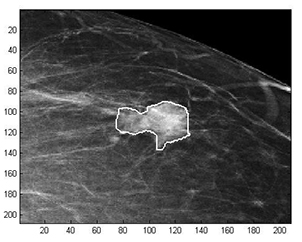Latest News Archive
Please select Category, Year, and then Month to display items
21 April 2021
|
Story Eugene Seegers
|
Photo Supplied
 Adelia Chauque graduated with distinction during the April Virtual Graduations hosted by the UFS.
Adelia Chauque graduated with distinction during the April Virtual Graduations hosted by the UFS.
On 20 April 2021, 693
South Campus students graduated during a
virtual ceremony, with 213 of them achieving distinctions. One of these is
Adelia Chauque, the newly elected South Campus SRC member for Policy and Transformation. During her journey as a student, Adelia says that she had numerous obstacles to overcome. For instance, she mentions that her “biggest challenge was completing my tasks with an unstable data connection during the pandemic”. Despite this impediment, Adelia managed to excel in her studies and obtained her qualification with distinction.
Adelia says her family was her biggest support system. “Due to the network problems that I faced my family had to drive me around until we found a stable connection that enabled me to write my tests.” Other support came from the university itself. “I received a lot of support from the academic adviser, Mr Chwaro Shuping,” she says. “Although he couldn't arrange for me to return to campus, he called regularly to ensure that I was still academically active.”
After overcoming these hurdles, Adelia is continuing her academic journey. “I am enthusiastic and eager to learn or to better myself. Due to that, I am furthering my studies by enrolling for a second degree programme in
Administration majoring in Industrial Psychology. I am very ambitious, in the sense that I strive for perfection and consistency with an organised and maintainable future, therefore being part of the SRC enables me to assist students and myself with a secured and comfortable learning environment to achieve our goals at the institution.”
Adelia balances her responsibilities in the SRC portfolio of Policy and Transformation on the South Campus by having a schedule planned that ensures she does not fall behind. She concludes, “During the morning, I attend my prescribed lectures to ensure that I will continue to slay academically. Then I am visible in the SRC office from 12:00 to 16:30. After hours, I contribute my time to study, but I remain available to students who prefer texting.” The university is keen to see the heights to which Adelia will attain in the coming years.
“I am enthusiastic and eager
to learn or to better myself.”
Adelia Chauque, South Campus SRC:
Policy and Transformation.
Mathematical methods used to detect and classify breast cancer masses
2016-08-10
 Examples of Acho’s breast mass
Examples of Acho’s breast mass
segmentation identification
Breast cancer is the leading cause of female mortality in developing countries. According to the World Health Organization (WHO), the low survival rates in developing countries are mainly due to the lack of early detection and adequate diagnosis programs.
Seeing the picture more clearly
Susan Acho from the University of the Free State’s Department of Medical Physics, breast cancer research focuses on using mathematical methods to delineate and classify breast masses. Advancements in medical research have led to remarkable progress in breast cancer detection, however, according to Acho, the methods of diagnosis currently available commercially, lack a detailed finesse in accurately identifying the boundaries of breast mass lesions.
Inspiration drawn from pioneer
Drawing inspiration from the Mammography Computer Aided Diagnosis Development and Implementation (CAADI) project, which was the brainchild Prof William Rae, Head of the department of Medical Physics, Acho’s MMedSc thesis titled ‘Segmentation and Quantitative Characterisation of Breast Masses Imaged using Digital Mammography’ investigates classical segmentation algorithms, texture features and classification of breast masses in mammography. It is a rare research topic in South Africa.
Characterisation of breast masses, involves delineating and analysing the breast mass region on a mammogram in order to determine its shape, margin and texture composition. Computer-aided diagnosis (CAD) program detects the outline of the mass lesion, and uses this information together with its texture features to determine the clinical traits of the mass. CAD programs mark suspicious areas for second look or areas on a mammogram that the radiologist might have overlooked. It can act as an independent double reader of a mammogram in institutions where there is a shortage of trained mammogram readers.
Light at the end of the tunnel
Breast cancer is one of the most common malignancies among females in South Africa. “The challenge is being able to apply these mathematical methods in the medical field to help find solutions to specific medical problems, and that’s what I hope my research will do,” she says.
By using mathematics, physics and digital imaging to understand breast masses on mammograms, her research bridges the gap between these fields to provide algorithms which are applicable in medical image interpretation.